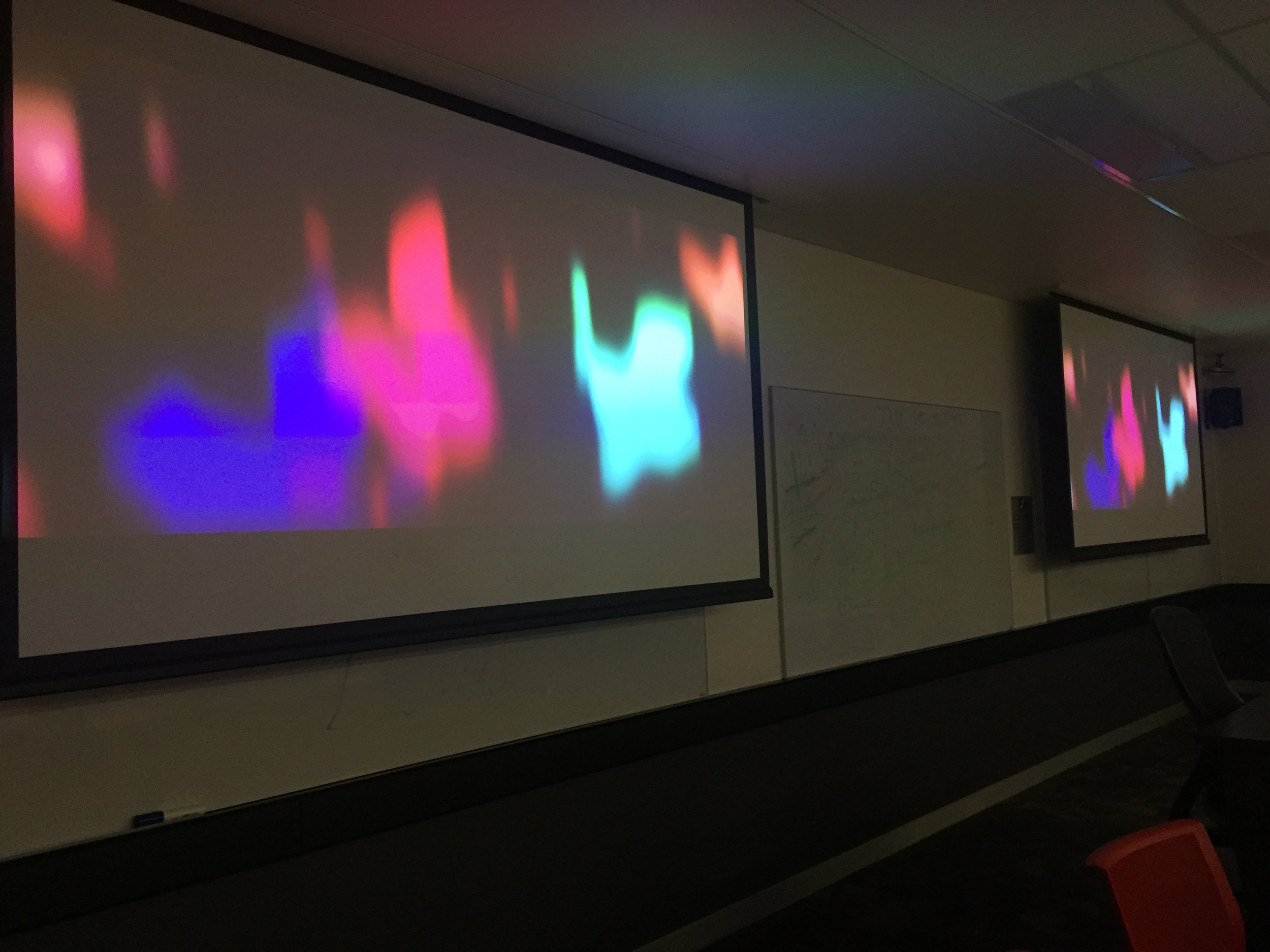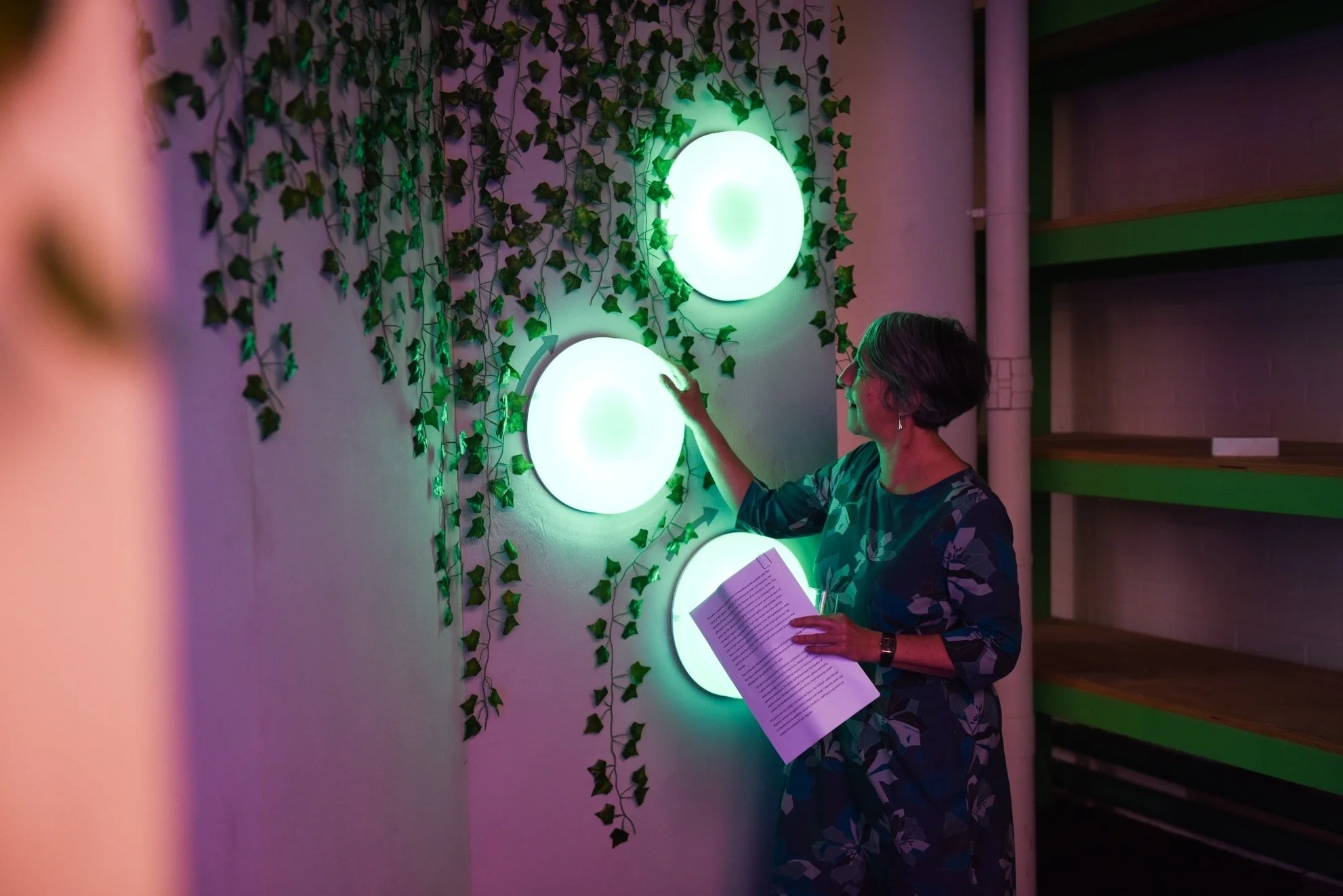PRODUCT DESIGN
Oasis
A blended interactive installation to minimise noise pollution in city green spaces and create a relaxing environment for the residents.
Project Brief
To augment urban environments in an innovative way, creating an improved standard of living for residents.
Our focus was on addressing noise pollution in inner city parks and green spaces.
Role
Background Research // Concept Development // Analysis // Documentation // Artistic Fabrication
Timeline
3 months
The Problem: Noise Pollution
Noise pollution is a major issue within our city spaces, with exposure causing negative effects on the mental and physical well-being of the residents. Noise pollution triggers a stress response within our bodies, leading to chronic stress, risk of heart disease, depression and other health issues.
Noise pollution impacts city streets, as well as parks and green spaces, changing them from relaxing escapes to new sources of stress for citizens.
Background Research
We did research into different problem areas and existing designs and discovered that the problem of noise pollution was not well addressed, and there were many opportunities for improvement.
I found some design precedents and existing technologies which we drew inspiration from and researched their target audiences to see how we might differentiate ourselves. Primarily, there were products targeting indoor office areas or individual devices, presenting a gap in the market. Most products were addressing the problem by using noise cancellation.
Initial Concepts
We collaboratively developed concepts to address our problem area, focusing on designing for key areas where noise pollution was most intrusive, such as construction sites and residential areas. We combined our background research, knowledge of sound, coding and building to create our initial concepts and iterations. I contributed my research into noise cancellation and noise transformation to ground our initial Oasis concept in realistic and innovative technology.
Concept 2 - City Soundscapes
Concept 3 - Oasis
Concept 1 - Painting with Noise
User Testing
Lo-fi prototyping and user testing was conducted using a variety of methods for each of our three concepts depending on what aspect of the idea we were testing.
Painting with noise walkway test
Painting with Noise
We simulated a construction environment to test the effect of visual stimuli on their emotional state.
City soundscapes workshop
City Soundscapes
We conducted a co-creation workshop to produce a paper wireframe showcasing key features they wanted in an interface.
Oasis light disc test
Oasis
We tested the two key aspects of the concept separately to gain feedback:
Noise transformation we created an environment to show natural and transformed (muted, musical) noise to tested whether the noise transformation feature was desirable and effective.
Light disc we set up a lo-fi prototype using a mounted circular tray to test how intuitive the disc interaction was, and how users naturally engaged with it.
Testing Conclusions
We then synthesised the data using affinity diagrams, insight statements, how might we questions and a decision matrix to find key insights, apply them to improve our concepts and to decide on a final idea to develop.
Painting with noise
Improves the experience of construction sites, but only marginally as it does not directly address the noise pollution.
City soundscapes
Needs to become community focused and increase its customisability to be desirable or viable.
Oasis
Core functions are desirable but must be refined to be user friendly. The ambience of transformed noise must be more emotionally conscious of users, while the light disc interaction needs to be more intuitive.
Overall, Oasis was the most desirable and viable concept in line with our brief and user feedback so we iterated and did further testing on this.
Oasis Iterations & Testing
In our iterations, we again tested the two key aspects of our design separately:
Light disc prototype
Redesigned light disc
We created a prototype and conducted a heuristic evaluation of the look, construction and functionality of disc.
Conclusion: The disc components need to be redesigned to better diffuse the light.
Oasis sound survey
Improved noise transformation
We conducted A/B testing on four new styles of transformed noise with varying moods and background sounds to see which sound had the most relaxing ambience.
Conclusion: The preferred sound qualities were calming, atmospheric and musical.
The Solution
Oasis is a large wall which is built around existing park benches and green space infrastructure. Complete with relaxing lights and sound, Oasis masks the noise pollution in the park, creating a pocket of tranquility within bustling cities. Users experience a calming, melodic sound which is played over the surrounding noise.
They can customise the sound by turning the lights, changing the volume of different notes. The lights ‘breathe’ calming colours of blue and green, completing in the meditative environment.
Watch the video to see Oasis in action
Feature 1
Oasis has speakers which play transformed traffic noise for the user. A sound clip recorded in Victoria park was manipulated using effects like reverb, compression & EQs, to create a soothing ambient sound.
Oasis allows the user to customise the sound to their liking so they can relax. Each light controls the volume of a different musical note and add it to the transformed backing track. The sound can be louder and more musical, or just masking for the noise, depending on user preference.
Sound: Noise Transformation and Customisation
Feature 2
The light discs for Oasis rotate to control the sound customisation. The large size of the discs makes it easy to turn and control the sound. The spinning motion and round shape of the disc imitates the interaction model of volume dials, so it’s more intuitive to users what the function is.
The light discs have LED strips inside which cycle through green and blue colours, slowly ‘breathing’ in and out, creating a meditative aesthetic. The dome casing on the lights has a frosting spray on the inside to diffuse the light.
Light Discs: Interaction and Display
Feature 3
Oasis is designed to suit the park environment in which it would be built. The structure has a concrete-look with faux ivy foliage covering the wall on both sides. This helps the large structure fit the colour palette of the green space. It is also a calming feature of nature which complements the green and blue of the light discs.
Aesthetics: Contextual Design
Challenges and Next Steps
Light Diffusion
The light diffusion was not as bright and consistent as desired, having a dark circle in the centre. We tried different placement of the lights and frosting the domes more, but found that the wrapped LED strips were still the best for this prototype. In future versions we would change the light source.
Feedback for Lights
The light disc had a limited feedback model for the user, only affecting the sound when interacted with. This is problematic in terms of communicating to the user what the function of the discs is. It is also difficult for the user if they are hearing impaired or the environment is particularly loud surrounding the wall. Alternatives such as changing the colour or intensity of the lights, or an LED volume bar would be possible solutions for further iterations.
Live Noise Transformation
Due to time and technical restraints, we were unable to make our noise transformation live, instead we manually edited a track of traffic noise to create a melodic sound. This allowed us to demonstrate the effect of noise transformation and allow the user to experience it.
















